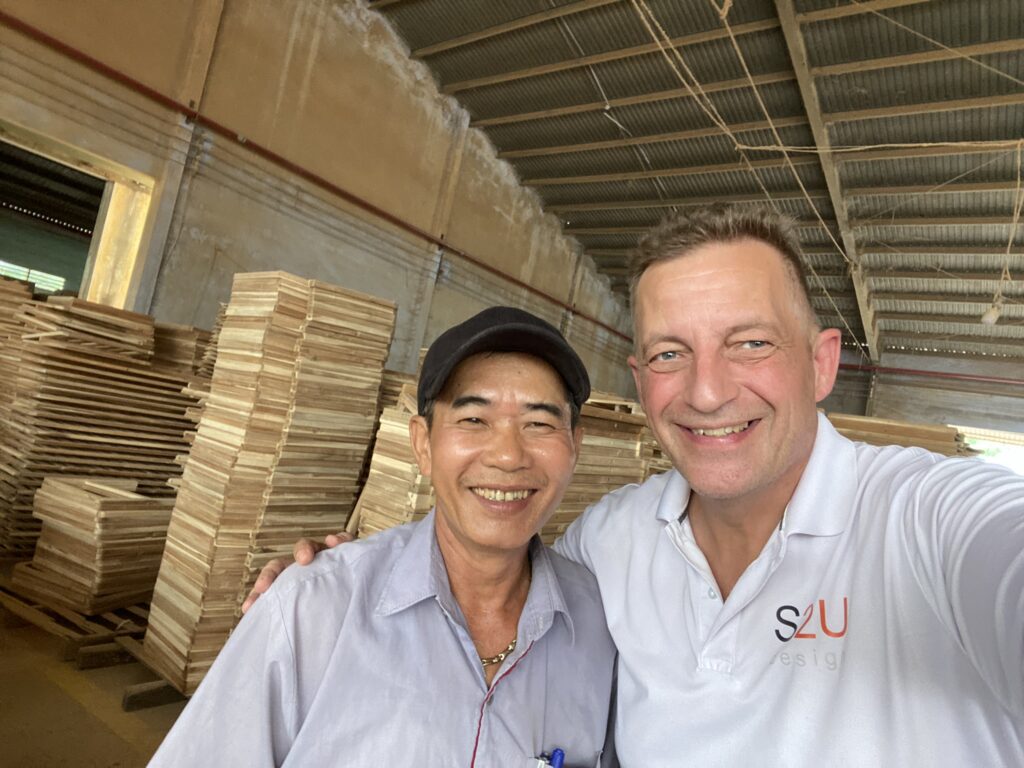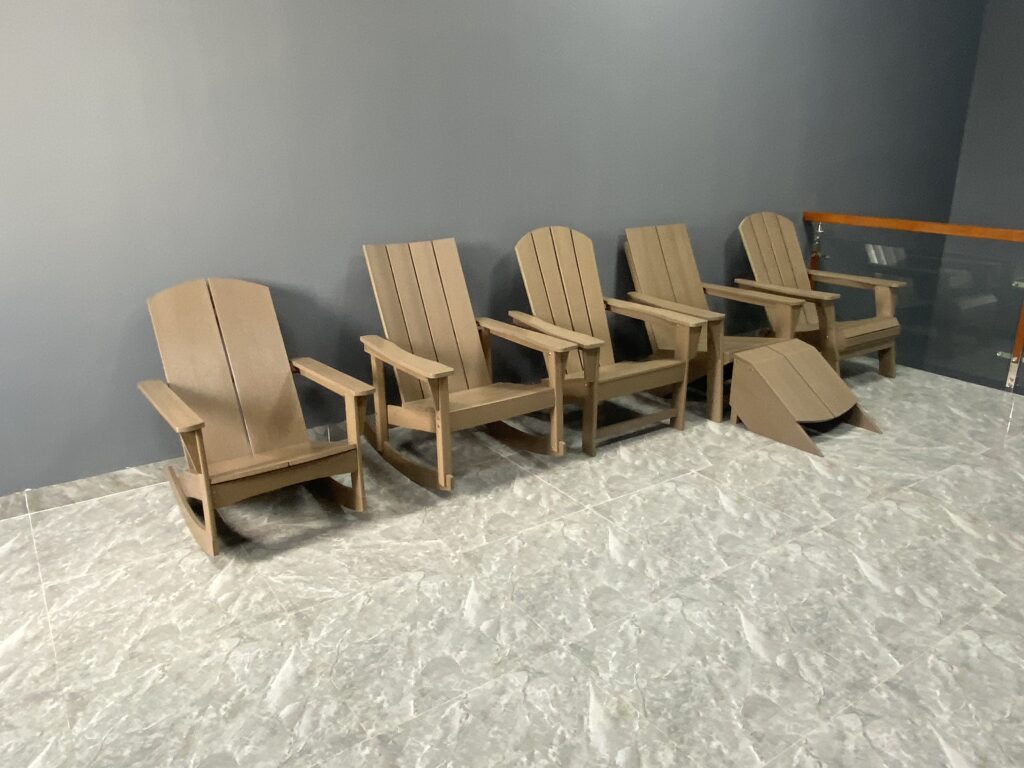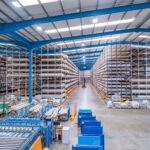Henrik Pontoppidan, Director of S2U Design, talks about the five key takeaways when mastering Vietnamese furniture sourcing.
Based on over a decade of engagement with Vietnamese furniture factories, navigating challenges and seizing opportunities, here are five key takeaways for anyone seeking success in sourcing furniture from the diverse, dynamic, and complex Vietnamese supply market.
1. Know Your Brief: A Foundation for Success
The journey to successful collaboration with Vietnamese manufacturers starts by understanding your product requirements. Sending only a picture to the chosen factory, a common but problematic approach, often leads to misunderstandings in proposals and quotations. To avoid this, provide a comprehensive brief with detailed sketches, dimensions, concept explanation, USPs, anticipated volume based on target prices, a defined timeframe, and precise specifications for materials and packaging. Include a realistic target price. This thorough brief expedites project fruition and establishes a foundation for a successful collaboration. Most Vietnamese manufacturers appreciate working with foreign buyers who clearly articulate their needs, reducing the factory’s burden of interpretation.
Rule number 1: Prepare well thought out briefs before asking for quotations.
2. The Right Factory – A Numbers Game, and Grafting is necessary
Selecting the right factory is crucial for project success, and it goes beyond finding a couple of options. The choice can make or break the product launch, and many issues I see foreign buyers having in factories, stem from not investing enough effort in the selection process.
The first step involves specifying criteria like capacity, strategy, technology, experience, specialization, and social responsibility. Next is the grafting process, and this is where most foreign buyers fall short: This process involves visiting as many seemingly qualifying factories as possible. While outsourcing this activity to a third party is common practice, your should bear in mind that the results depend on the skills and knowledge of the third-party staff and/or may be influenced by their personal relationships with those factories.
I strongly advise against outsourcing this critical activity. It’s best controlled within your organization to ensure optimal decision-making. As a bonus, ongoing factory visits can serve multiple purposes. Firstly, they motivate production partners, identify production issues before they become costly, and strengthen relationships, making manufacturers prioritize your project. Secondly, knowledge of factories that don’t qualify for a specific project can be invaluable for future endeavors, continually bolstering your organization’s capabilities. Thirdly, engaging in continuous factory visits helps you stay informed about emerging trends, competitor actions, and potential opportunities. If you visit Vietnamese factories on a few annual brief visits to the country, imagine the insights gained from these visits – now envision the immense knowledge enhancement if this were a consistent, ongoing activity within your organisation.

Rule number 2: You cannot visit factories too much. Every visit generates knowledge and strengthen your competitive advantage through knowledge
3. Design for Cost – Based on a Western design approach.’
Recognise the drawbacks of relying solely on Vietnamese factory designs, often led by fresh engineering graduates lacking critical thinking and creativity. In a recent project for a US wholesaler, for a sourcing project, I was asked not to create technical designs – because ‘the factories know better’. After 6 weeks of all manufacturers struggling to meet ambitious requirements, I found myself ending up working hard to redesign all 40 SKUs. The result was that all factories achieved optimal quality, consumer-friendly solutions, minimised production risks, products configured for ecommerce, – and met target prices! On my client’s visit, perfect samples were presented, all SKUs were immediately approved and are now in production. Here is a good way to be ahead of competition. Most importers rely on their chosen factory’s dogmatic designs. An obvious approach for competitive advantage is to own the designing process, integrate critical thinking, creativity, and technical knowledge – a Western mindset.
Rule number 3: Don’t rely solely on Factory designs – create better designs in-house, to reduce cost, create better products and improve quality.
4. Understand the Factory – Unveiling Motivations
Successful collaboration with Vietnamese factories relies on understanding their motivations. Importers often make a critical error by initiating repeated design changes without adequate preparation. This investment of time and resources in creating the perfect design is compromised when alterations are made after samples are produced and prices agreed upon. Recognizing the impact on factory motivation, importers should request designs, specifications and prices only based on having done their homework eliminating the risk of having to request changes more than necessary. This will motivate suppliers and foster long-term success. Once the brief is agreed upon, avoid unnecessary alterations, as demotivated factories compromise efficiency and may abandon projects altogether, without voicing their frustration. A motivated supplier is invaluable; – and low or no motivation results in stranded projects and missed opportunities.
Rule number 4: Whenever possible, stimulate and maintain your manufacturing partners’ motivation.
5. QC – Be in Control of Quality
Quality control (QC) is more than a superficial inspection; it demands a proactive and systematic approach. Particularly in Vietnam. You should lead a holistic QC process. Never sign off initiation of production without agreed technical drawings, secure a signed master sample, and create a comprehensive technical document for each SKU. Use these 3 elements to QC against and ensure that requirements are understood to alleviate possible misunderstandings and disagreements about what is QC passable and what isn’t. Taking control of the documentation process, including signed drawings, master samples, and technical documents, enhances clarity, reduces disputes, and elevates overall manufacturing quality – and it secures a better and more fruitful long term relationship with the supplier. Often I witness examples of QC without master samples, signed drawings or technical documents. Please for your own business performance make sure these examples are not your company.
Rule number 5: Own your own QC system and principles – and police them.
Implementing these five pieces of advice hinges on your organisation’s capability. It’s a challenge to find staff with the broad knowledge and skills (as well as time and consistent drive) to successfully manage all five rules, coupled with thorough understanding of the Vietnamese supply market. If you require assistance, I am ready to take responsibility for implementing all five rules, acting as your dedicated ‘buying office.’ This includes providing better results, sharing information with your organisation, managing a feedback system based on KPIs, and enabling direct dealings with manufacturers, leading to significant savings on buy prices while maintaining control and transparency. All of this can be accomplished without the need for costly expatriates stationed in Vietnam; and/or a difficult-to-manage from abroad Vietnamese team. I am already here. Feel free to reach out anytime.
Email: henrik@s2udesign.com
Tel VN: +84 (0)82 7600 171
Tel UK: +44 1432 851 824
Tel DK +45 36 99 16 77















